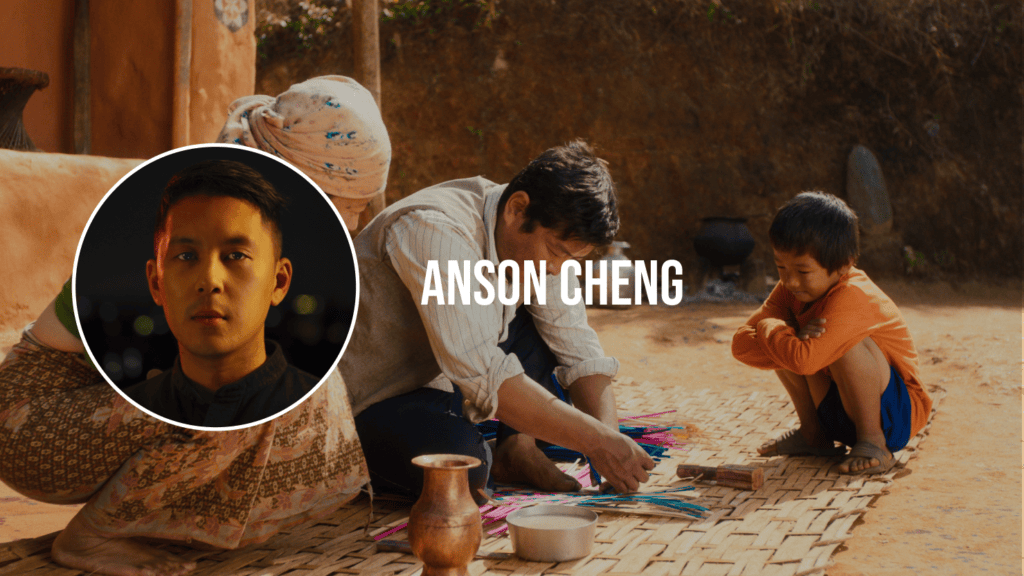A Passion for Visual Storytelling
For colorist Anson Cheng, working on A Road to A Village (2023) was a fascinating and rewarding experience. The film’s universal themes of family, change, and resilience connect audiences across cultures, and Anson’s work in color grading the film played a key role in reinforcing its storytelling.
“The road in the film symbolizes the family’s journey—both geographically and socially,” he explains. “I set an earth-tone palette and subtly shifted it in response to the narrative’s dynamics. Creating visual cohesion while supporting the drama was incredibly fulfilling.”

The Detail in Grading
Anson’s background in cinematography has greatly influenced his approach to color. While he enjoys crafting aesthetics, what excites him most is how color can enhance emotion and storytelling.

“Coming from cinematography, I have a strong sensitivity to how composition and lighting define a film’s dramatic level. Color grading allows me to take that even further, finessing the visuals to heighten impact,” he says. “It’s compelling work, especially for someone like me, who is drawn to details and subtle nuances.”

A Journey into the Industry
Anson’s passion for filmmaking started in secondary school when he got his first prosumer camera. He experimented with cinematography, exploring dramatic zoom effects, and soon discovered color grading plugins in Adobe Premiere. That discovery sparked his fascination with the craft.

Before graduating university, he secured a five-month training opportunity at Edisen, a global post-production house in New York City. There, he worked as a color assistant, learning the ins and outs of advertising post-production workflows, attending Blackmagic training, and coloring various projects to refine his technical skills. Now, he’s continuing to advance his career at Company 3, a leading post-production studio. “It’s been a journey fuelled by passion and curiosity, and I’ve found it incredibly enjoyable,” he reflects.
Challenges and Highlights
Despite the rewarding experience, working on A Road to a Village also came with its challenges. “Color grading an independent film requires balancing creative intent with limited resources,” Anson explains. “We had to ensure the film’s visual language remained consistent despite the varying lighting conditions of the shoot. It was a meticulous process, but seeing the final result on screen made it all worth it.”

Anson’s favourite aspect of working on the film was collaborating with director Nabin Subba and cinematographer Josh Herum. “Their commitment to storytelling made my job easier. We had a shared vision, and that synergy helped create a seamless and immersive visual experience.”
Advice for Aspiring Colorists
For those looking to break into the industry, Anson emphasizes the importance of hands-on experience, building a portfolio, and networking.
“Many students start by collaborating with friends on short films during university. The more projects you work on, the more you refine your craft,” he advises. “At the same time, networking is just as important. Connect with peers, mentors, and professionals on LinkedIn, forums, or industry events—it makes a huge difference.”

His biggest advice? Be proactive. “The willingness to learn and enthusiasm will always set you apart from others. It can feel intimidating to start out, but don’t hesitate to reach out for a chat or coffee.”
Looking to the Future
With A Road to a Village gaining recognition at international film festivals, Anson is excited about the future of Nepalese cinema. “This film proves that independent cinema can have a global impact. I hope to continue working on projects that bring meaningful stories to life through the power of color.”

For Anson, color-grading isn’t just about adjusting visuals—it’s about crafting an emotional connection. “Color can trigger memories, inspire thoughts, and deepen storytelling. That’s what makes it such a powerful part of filmmaking.”
Read more about Anson’s approach to grading A Road to A Village:
Colour Overview
Narrative Elements of Earth
Treatment of Conflicts & Tragedies

